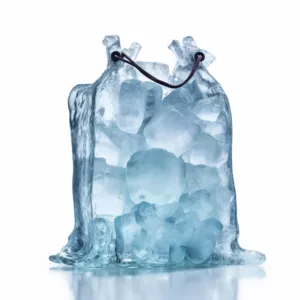Do you ice arm after pitching?
 Pitching in sports, particularly baseball, puts a tremendous load on the arm. The repetitive motion of throwing a baseball at high speeds can cause muscular weariness, joint tension, and even injury. As a result, sportsmen are continuously looking for effective ways to relieve pain and speed up recovery after a strenuous pitching session. Among the several strategies proposed, freezing the arm after pitching is a point of contention in the sports medicine community. We hope to go into the benefits and drawbacks of this strategy in this detailed post, offering light on whether icing the arm after pitching is genuinely advantageous or not.
Pitching in sports, particularly baseball, puts a tremendous load on the arm. The repetitive motion of throwing a baseball at high speeds can cause muscular weariness, joint tension, and even injury. As a result, sportsmen are continuously looking for effective ways to relieve pain and speed up recovery after a strenuous pitching session. Among the several strategies proposed, freezing the arm after pitching is a point of contention in the sports medicine community. We hope to go into the benefits and drawbacks of this strategy in this detailed post, offering light on whether icing the arm after pitching is genuinely advantageous or not.
Pitchers are particularly vulnerable to arm-related illnesses and ailments in the realm of competitive sports, notably baseball. Pitching's repetitive and powerful nature puts enormous strain on the muscles, tendons, ligaments, and joints of the throwing arm. As a result, it is critical for athletes to investigate alternative recovery strategies that can aid in pain relief, inflammation reduction, and healing. Among the many ways available, freezing the arm after pitching has received a lot of attention and caused a lot of debate among experts. While some claim that cold therapy can provide instant relief and help reduce inflammation, others are concerned about potential side effects such as delayed healing and concealing underlying disorders. In this post, we will delve deep into the topic of cooling the arm after pitching, exploring both the potential benefits and drawbacks of the practice and offering a balanced perspective on the practice. We hope to provide significant insights that will assist athletes and professionals in making informed decisions about post-pitching rehabilitation procedures.
Is it Beneficial to Ice the Arm After Pitching? Unveiling the Debate
 Pitchers' arms are subjected to significant strain as a result of the repetitive motion and high-intensity nature of their activity. The contradictory viewpoints within the sports medicine profession have led to the dispute over whether freezing the arm after pitching is advantageous. Let us investigate the many points of view on this subject and shed light on the potential benefits and drawbacks.
Pitchers' arms are subjected to significant strain as a result of the repetitive motion and high-intensity nature of their activity. The contradictory viewpoints within the sports medicine profession have led to the dispute over whether freezing the arm after pitching is advantageous. Let us investigate the many points of view on this subject and shed light on the potential benefits and drawbacks.
Icing the Arm After Pitching Benefits Reduced Inflammation and Swelling
After pitching, icing the arm can help reduce inflammation and swelling. Because of the chilly temperature, blood arteries contract, reducing blood flow to the area. This restriction limits the quantity of fluid that collects in the tissues, reducing inflammation and swelling as a result.
- Pain Relieving: Pain reduction is one of the primary advantages of cooling the arm after pitching. The cool temperature numbs the area and suppresses pain signals briefly. This gives pitchers much-needed rest, especially after a strenuous game or practice session.
- Microtrauma Avoidance: Due to the repetitive tension imposed on the arm during pitching, microtrauma, or small-scale tissue injury, can develop. Icing the arm after pitching can help prevent additional injury by reducing inflammation and swelling and allowing the tissues to recover more quickly.
The Negative Effects of Icing the Arm After Pitching
- Delayed Healing: While cooling the arm can provide temporary relief, it is possible that it will slow the healing process. The cold inhibits blood flow, which is necessary for providing oxygen and nutrients to the damaged tissues. As a result, prolonged ice may interfere with the body's natural healing capabilities.
- Obscuring underlying problems: Icing the arm might relieve pain and stiffness briefly, potentially hiding underlying concerns. Pitchers who rely on icing without treating the underlying cause of their arm difficulties risk exacerbating the ailment or developing chronic illnesses.
Ice Arm After Pitching Best Practices
 Following the prescribed steps when you want to ice arm after pitching. This can help optimize the advantages and ensure maximum results. Here are some crucial guidelines to keep in mind:
Following the prescribed steps when you want to ice arm after pitching. This can help optimize the advantages and ensure maximum results. Here are some crucial guidelines to keep in mind:
- The importance of timing cannot be overstated: After pitching, ice the arm as quickly as possible. Applying cold therapy as soon as possible will help reduce inflammation and the possibility of developing severe discomfort or swelling.
- Prepare the frosting ingredients: Gather your materials, which should include an ice pack, ice cubes, or a bag of frozen veggies. Wrap the ice pack or cover it with a small towel to avoid direct contact with the skin and potential frostbite.
- Lift your arm: Find a comfortable posture where you can slightly lift your arm while icing. This position improves blood circulation and helps to reduce edema.
- Apply ice for the right time: Apply an ice pack to the affected area for 15 to 20 minutes. This duration provides for effective cooling while avoiding any negative consequences. Excessive icing may interfere with the natural healing process, therefore do not exceed this time limit.
- Take Breaks: Allow the arm to rest and recuperate after the initial icing session before reapplying the ice. Taking short rests between icing treatments helps prevent cold overexposure and allows tissues to return to normal temperature.
- Repeat icing as needed: Depending on the extent of soreness and discomfort, you may need to repeat the ice technique 2 to 3 times within the first few hours after pitching. However, it is critical to listen to your body and avoid over-icing, which can stymie the healing process.
- Combine icing with other healing methods: While icing might be helpful, it is also important to include other recovery methods in your regimen. Stretching, moderate exercises, and light massage can all aid in the improvement of blood flow, flexibility, and overall arm rehabilitation.
- Seek professional advice: Consult a medical expert, such as a sports physician or physical therapist, if you are experiencing persistent or severe pain. They may assess your condition, provide precise recommendations, and create a complete recovery plan tailored to your individual needs.
By following these instructions, you can effectively incorporate icing into your post-pitching rehabilitation routine. Remember that moderation and a comprehensive approach to arm care are essential for long-term health and performance.
Is it safe to freeze your arm after pitching? Absolutely! Icing can be a valuable aid in reducing inflammation, alleviating pain, and facilitating a speedier healing process when done appropriately and in conjunction with other recovery strategies.
Frequently Asked Questions
Q: Do you have to freeze your arm after every pitching session?
A: It is not required to ice the pitching arm after each practice. Icing should be utilized as a rehabilitation technique, especially after intense or lengthy throwing sessions. Moderation is essential for avoiding unpleasant consequences.
Q: After throwing, how long should I ice my arm?
A: It is usually best to ice the arm for 15-20 minutes at a time. This time frame provides for proper cooling without causing frostbite or severe blood vessel constriction.
Q: Are there any other ways to relieve arm discomfort after pitching?
A: Yes, there are alternatives to frosting that can be used in addition to or instead of icing. Stretching, gentle workouts, massage, and providing heat can also aid with arm rehabilitation and pain relief.
Q: Should I speak with a medical professional before using icing?
A: Before adopting any recuperation approach into your regimen, always visit a medical practitioner, such as a sports physician or physical therapist. They can evaluate your individual circumstances and make tailored advice.
Q: Is icing dangerous if done incorrectly?
A: Yes, icing can be dangerous if done wrong. Frostbite can be caused by applying ice directly to the skin or icing for an extended period of time. To avoid direct contact with the skin, wrap the ice pack in a towel or use specialized cold packs.
Q: Are there any long-term consequences to frequent icing?
A: While studies on the long-term effects of regular icing is sparse, it is critical to avoid over-reliance on icing as the main recovery option. Over time, it may be good to investigate additional arm recovery procedures and talk with a medical practitioner.
TopVelocity Nutritional Program will help you recover faster
 While cooling the arm after pitching is a good practice, it is only one component of optimizing your recovery and improving your effectiveness on the field. To properly optimize your potential and elevate your game, you must take a comprehensive strategy that involves correct nutrition and nourishing your body with the necessary nutrients.
While cooling the arm after pitching is a good practice, it is only one component of optimizing your recovery and improving your effectiveness on the field. To properly optimize your potential and elevate your game, you must take a comprehensive strategy that involves correct nutrition and nourishing your body with the necessary nutrients.
If you're serious about improving your arm health, strength, and overall athletic performance, we strongly advise you to look into the TopVelocity Nutritional Program, which is accessible at TopVelocity.net/nutrition. This program has been rigorously crafted by sports nutrition specialists to offer athletes with the skills and information needed to successfully nourish their bodies and support optimal recovery.
Joining the TopVelocity Nutritional Program gives you access to a plethora of materials, including:
- Tailored Nutrition programs: Receive customized meal programs tailored to pitchers' and athletes' individual needs. These plans take your goals, workout intensity, and nutritional choices into account to ensure you obtain the proper balance of macronutrients and micronutrients.
- Comprehensive Nutritional Advice: Discover the ideal foods to eat for maximum healing, muscular growth, and injury avoidance. Learn the importance of hydration, pre-and post-workout nutrition, and how to time your meals appropriately for optimal effect.
- Enhance Recommendations: Learn about supplements that can enhance your nutritional diet and give you an edge in recovery and performance. Learn about clinically supported supplements and how to properly incorporate them into your regimen.
- Educational Resources: Access a library of educational materials, such as articles, videos, and guides, on a variety of sports nutrition issues. Keep up to date on the latest research and evidence-based approaches.
- Supportive group: Join the TopVelocity group to connect with other athletes and nutrition professionals. Share your stories, ask concerns, and get advice from people who understand the specific obstacles that pitchers and athletes confront.
Investing in your nutrition is an investment in your long-term athletic success. You may improve your performance, lower your chance of injury, and improve your general well-being by combining good nutrition with effective recovery measures such as icing the arm after pitching.
Don't pass up this opportunity to improve your recuperation and performance. Start your journey to a healthier, stronger, and more resilient pitching arm now by visiting TopVelocity.net/nutrition.
Remember that success on the field is on more than just the hours you put in at the gym; it's also about feeding your body the correct nutrients. With the TopVelocity Nutritional Program, you can take the next step toward realizing your full potential.
Is it safe to freeze your arm after pitching? Absolutely! Explore the TopVelocity Nutritional Program and discover the power of appropriate nutrition to boost your recovery and reach your top performance.




